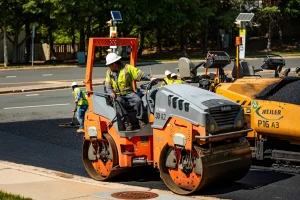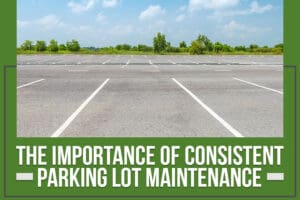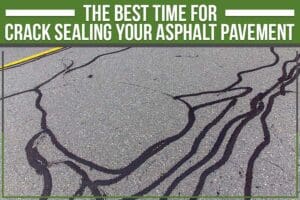If you’re an experienced driver in the United States, you’ve seen them. You know, those roads with lines down the middle, and sometimes an artistic zigzag design. Yeah, those are called cracks. Factors like the freeze-thaw cycle and tree roots are the most common causes.
Cracks can be small and barely detectable, or they can be large and deep enough to damage your tires or even cause an accident. Patching up these pesky areas can seem like a never-ending battle, but what are your options?
Crack fill and crack seal are two standard methods used to repair cracks in asphalt. But is there a difference between the two? Let’s learn more about them.
Working Vs. Non-Working Cracks:
Before we look into the methods of saving your asphalt, we need first to identify the type of crack you’re dealing with. It is essential because not all damages are created equal – some require different repair methods.
Working and non-working cracks are the two main types of cracks.
Non-Working Cracks – These are vertical or diagonal cracks that extend into the asphalt but don’t show any movement. They don’t expand or contract in hot or cold weather, so they’re relatively easy to repair. These non-working cracks result from temperature changes, traffic, and poor drainage.
Working Cracks – These are different. Working cracks are horizontal or vertical cracks that move when the temperature changes. Traffic and poor drainage can also lead to active cracks. These are more serious because they require a more complex repair.
What is Crack Filling?
Crack filling is an asphalt repair solution for non-working cracks. The materials included are liquid asphalt, asphalt emulsions, and cutbacks.
It is a temporary fix that involves injecting a hot sealant into the crack to fill it. Crack filling is not a structural repair, but it can extend the life of your pavement by sealing the cracks and preventing water from entering.
Crack filling costs way less than crack sealing, making it the more affordable option. However, it is not as long-lasting as crack sealing. It may last two seasons at the most.
Climate also plays a role in how well crack filling works. Temperature shifts can cause the crack fill to deteriorate, and it will need to be replaced sooner. Therefore, mild climates with fewer temperature fluctuations are ideal for crack filling.
What is Crack Sealing?
Crack sealing is a permanent asphalt repair solution involving a hot sealant to fill cracks. The sealant used is specifically designed to withstand the expansion and contraction as temperatures change.
Working cracks are sealed by injecting a hot sealant into the crack, which bonds to the sides of the crack. The sealant not only stops water and debris from entering the crack but also expands and contracts as temperatures change, which prevents additional cracking.
The flexibility of the precisely prepared hot pour rubberized sealant is said to contribute to the long-lasting nature of crack sealing.
Crack sealing materials include:
- Asphalt rubber
- Rubberized asphalt
- Low-modulus rubberized asphalt
- Self-leveling silicone
You can expect crack sealing to last for eight years and more.
Conclusion:
Only an experienced and knowledgeable contractor should attempt to seal cracks. Improperly sealing a crack can result in the need for complete pavement replacement down the road.
Be sure to consult with Brothers Paving & Concrete, serving Fairfax, for all your paving needs!
Our crack sealing services will keep your asphalt from deteriorating and prevent any future cracking or potholes from forming. Get a free estimate to get started!





